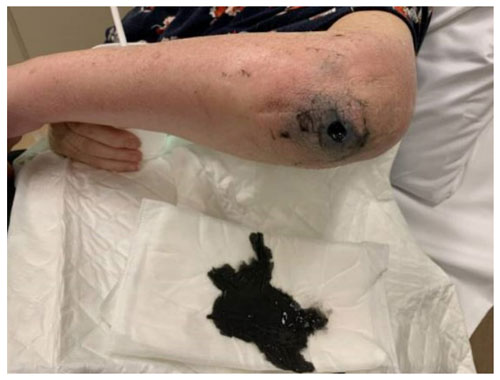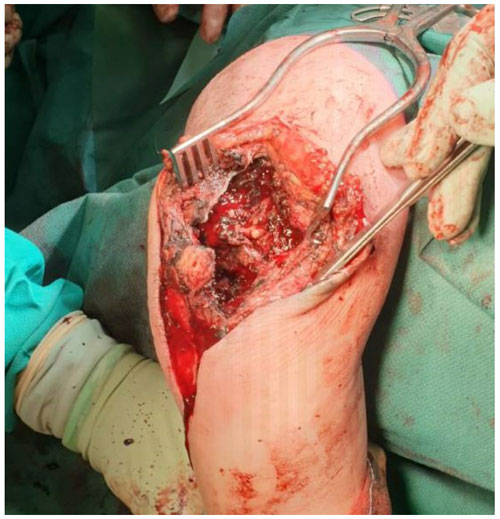Articles | Volume 7, issue 1
https://doi.org/10.5194/jbji-7-33-2022
© Author(s) 2022. This work is distributed under the Creative Commons Attribution 4.0 License.
Black pus from a worn-out elbow arthroplasty
1 Clinical picture
2 Conclusion
Data availability
Author contributions
Competing interests
Disclaimer
Acknowledgements
Review statement
References






